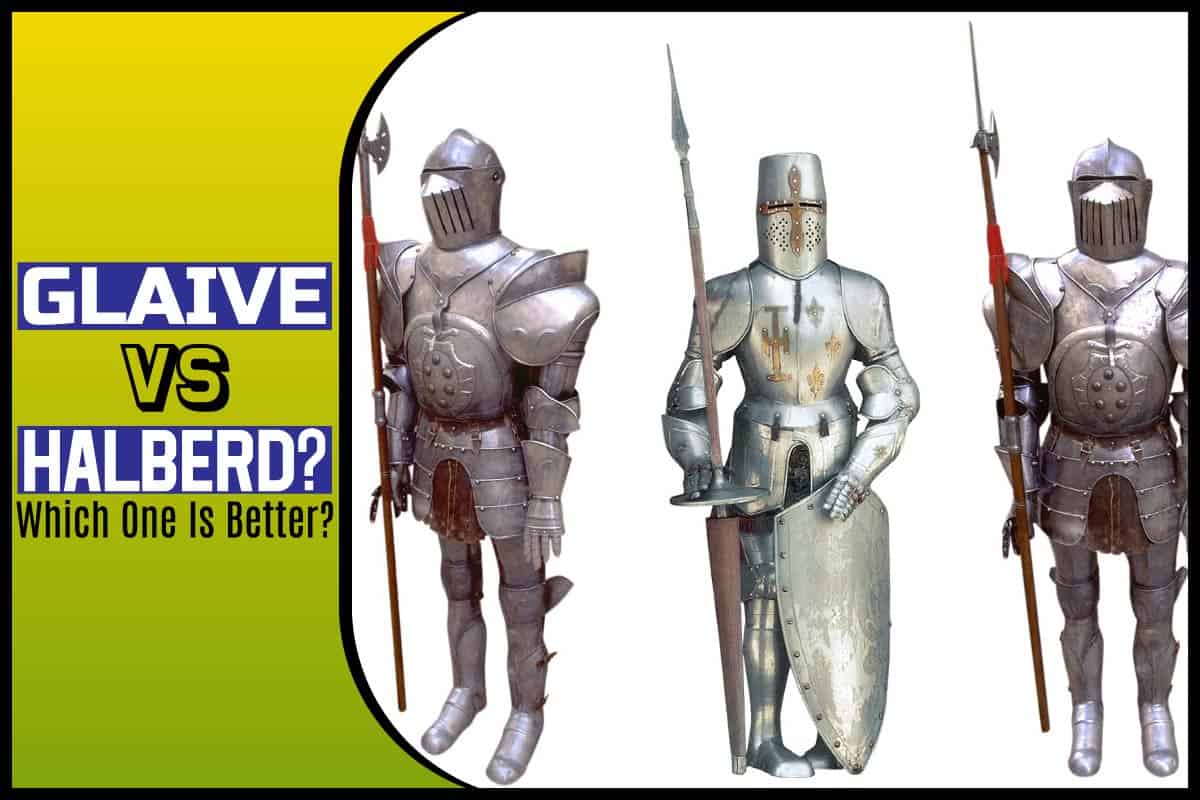Glaive and Halberd are two of the most common medieval weapons that had a substantial impact on the fighting style of the soldiers.
These two weapons can also be seen in a few old video games with some modifications. In this guide, we’ll take a close look at Glaive vs Halberd to learn more about the tools.
Differences And Similarities Between Glaive And Halberd
Let’s discuss these two weapons in terms of their contrasting and matching features.
Basic Idea
Glaive is just a sword attached to a long stick. The design is simple, and the shaft is usually long to allow the weapon’s user to have a long range of attacks in combat.
On the other hand, Halberd is similar to axes we say these days except with a slight difference: the ax blade is two-sided.
The front of the ax can be of any size, but it’s preferred to be longer than the size of currently made axes. The blade’s head on the back is smaller.
Customizability
Glaives can be customized into various designs. Halberd, on the other hand, isn’t so flexible with changing its design.
Sole Fighters
If you consider how easy a weapon is on a person, Glaive wins. A Glaive can be customized to a certain length depending on a fighter’s height so that he can smoothly move with it in his hand.
Now, some people prefer shorter Glaives. They’re comfortable with it because of their short-range, making it easier to hit an opponent in close combat.
A Glaive is lighter than a Halberd, so it’s easier to move too. Some people like longer Glaives since they can allow the fighters to attack enemies from a range.
A Halberd is heavier than a Glaive, and this makes it quite hard to use for beginners. This weapon takes even soldiers some time to get used to its weight and how it needs to be moved in a battle.
But once a soldier gets comfortable using it, using it becomes second nature to him.
Since the weapon is short, it’s good for close-range combat. While using a Glaive, a soldier has to push its head inside an enemy to attack him and, afterward, take it out.
The movements required for hitting and taking the sword out takes some space around a soldier. Without enough room, using Glaive can be a little complicated.
Halberd is small and doesn’t need any forward or backward movement as Glaive does. That makes it easy to move within close distance fights as well as in battles where the enemies are overcrowded in an area.
Cost of Repair
A Halberd has a lot of metal in its double-headed bladed. This is why it can cost quite a lot more than a Glaive. Repairing it can be expensive since the piece of metal might not always be repairable and need replacements.
On the contrary, a Glaive has a piece of sword on top of a stick. Most of the time, a Glaive needs its blade sharpened and smoothened up.
The repairing costs aren’t always much for this reason. But if sometimes the blade gets broken, then a total replacement can be costly.
Final Words
None is the winner in the battle of Glaive vs. Halberd. It all depends on the soldier. There are many other polearm weapons similar to these two, and all of them have their right places. A weapon isn’t only crucial in a battle; who uses it and how skilled he/she is with their weapon is equally important to ensure a good outcome.
You May Like These Articles As Well:
 Being Human
Being Human




